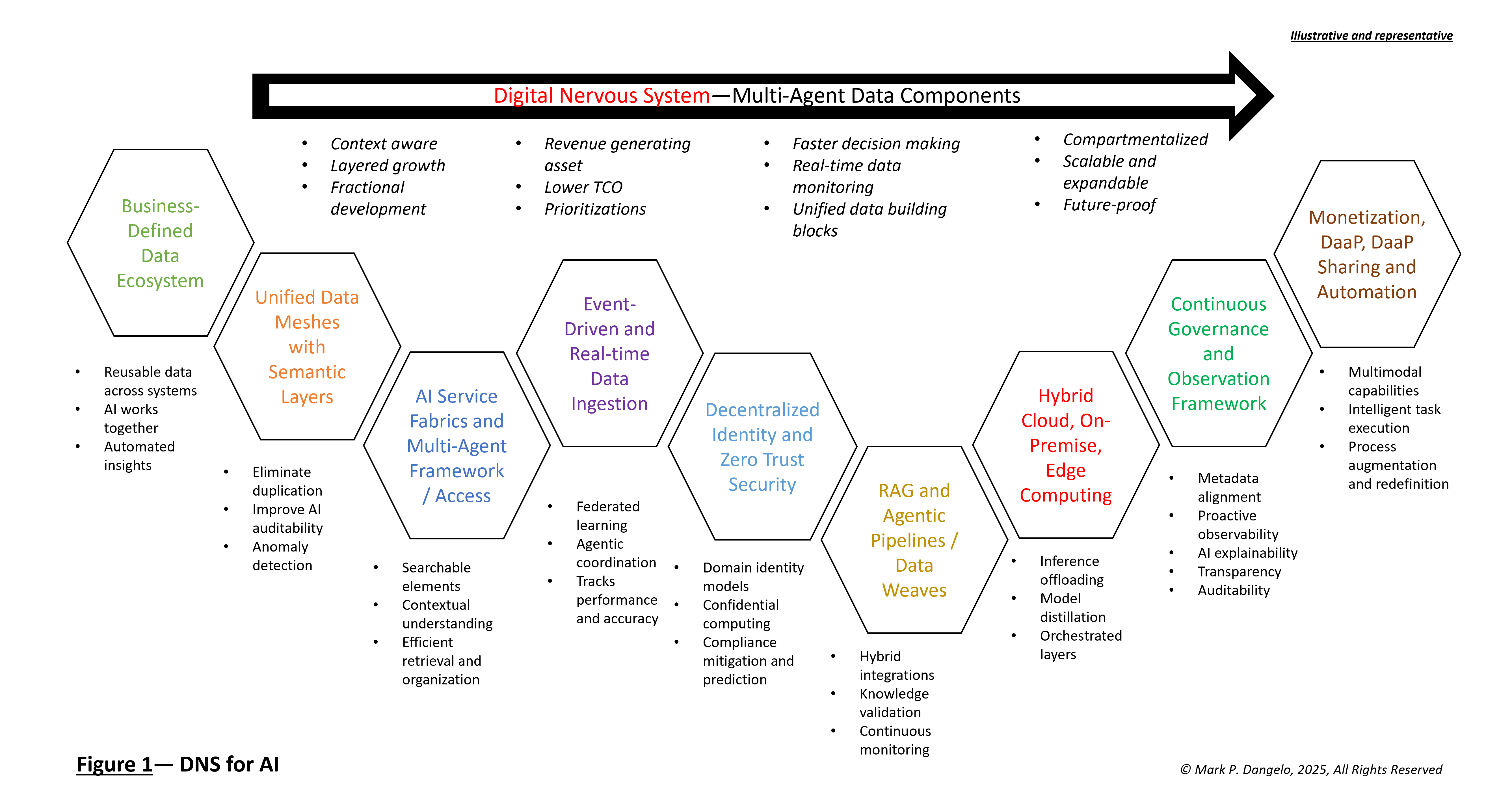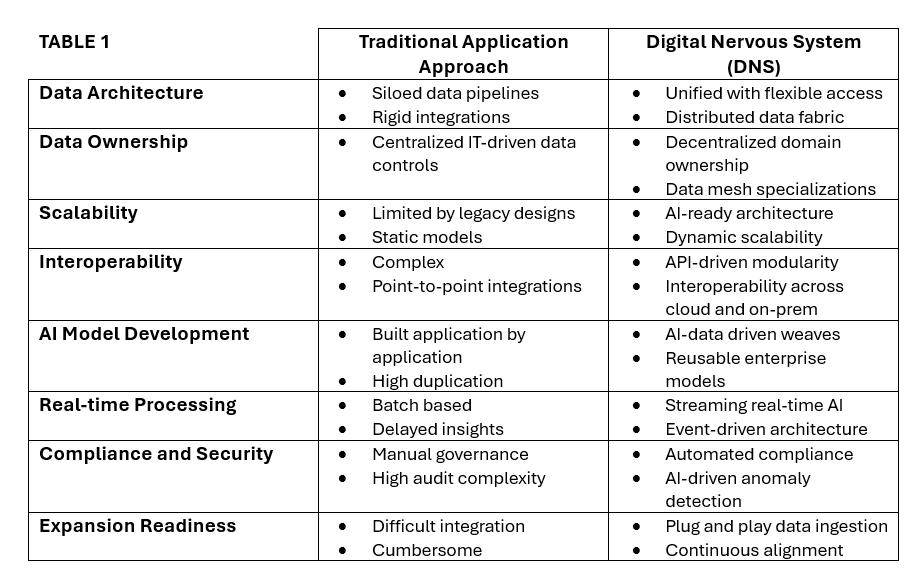Like the core “information highway” within animals, AI demands a digital nervous system that can be used and reused across all current and future designs — and that makes fragmentation an AI killer
The explosion of AI capabilities over the last three years has changed leadership discussions regardless of industry and compliance oversight. However, these rapid-cycle AI dialogues and call-to-actions are undergoing continuous iterations, which are stoking confusion, inconsistencies, and expensive failures.
Across all aspects of industry, we have previously adopted hyper-cycle technology advancements without this rising degree of uncertainty and implementation chaos. The difference with advanced intelligent solutions that began in 2023 and those already being introduced in 2025 is analogous to single-cell versus multi-cell organisms possessing complex, centralized nervous systems.
Many challenges, one commonality
AI is rapidly moving from basic — that is, rule-based, rigid, and reactive — to layers of granular capabilities with specialized functionalities, such as vast data and adaptive, compartmentalized layers. The challenges against rising technological intelligence layered into actionable, self-learning capabilities are numerous and include: i) setting realistic business returns; ii) projecting traditional life-cycles and retirements; iii) integrating active governance and oversight; iv) promoting skills and specializations; v) allowing for on-premise or cloud infrastructures; vi) erecting efficacy guardrails; vii) determining requirements linked to implementation methods; and viii) establishing common data streams, modules, and traceability.
Whereas the first seven items seem daunting, it is actually number eight that is the most common problem for all the prior challenges, even while data as a core AI competency is frequently addressed as standalone repositories that encase tens of billions of parameters.
However, the treatment of AI as standalone or one-off systems creates a new level of data fragmentation, which cannot be easily integrated, reconciled, or economically adapted. Additionally, with the rise in adoption of retrieval-augmented generation and agentic AI architectures, the business requirements for a common digital nervous system spanning layers of AI complexity is coming into view not as an option but as an axiom.
For AI to remain viable as compared to a series of independent applications, data must be managed with increased specificity linked to business value rather than as a grouping of single-celled organisms. History is littered with evolutionary failures using legacy designs and technologies that initially showed great promise at scale and performance until data interoperability requirements proved too costly over time. As we have seen since 2023, the life cycles of viable AI solutions are measured in months — not years and decades.
With AI now becoming increasingly granular, using smaller data clusters, incorporating vast operational systems-of-record, and being stackable with self-learning capabilities, the need for a common digital nervous system is no longer an IT or academic exercise. AI rapid evolution is now highlighting a fatal flaw — how to deliver growing, common data assets that are used to train and guide intelligent solutions beyond prototypes and pilots.
Continuous evolution, future-proof approach
What is the answer for AI technology that is isolated, embryonic, and evolutionary? Like the core information highway within animals, AI demands a digital nervous system that can be used and reused across all current and future designs. Unlike prior data management solutions that were enterprise-focused, costly, and incomplete, the creation and expansion of a digital nervous system for AI is not an IT paradigm.
The digital nervous system goes beyond automation, and the chart below provides a representation of its segmentation and purpose. Each of these compartments can be addressed separately, in tandem with others, or as part of a holistic design.

The creation of a common digital nervous system is not academic nor is it a one-and done architectural design. Rather, it represents the foundation that all AI systems are and will be built upon. While the foundation can be extended, modified, or removed, it ensures that whatever the AI functional requirements, the system will not collapse as new use cases and functional capabilities are added.
Without a common digital nervous system for AI, each uniquely defined solution will have traditional data risks, concurrency, and auditability challenges that historically have plagued legacy software. The table below provides the comparison between traditional approaches and those requirements necessary for robust, auditable AI components.

To take advantage of a digital nervous system with limited resources available, the first question often is: Where to begin? Forget five-year data and digital nervous system roadmaps. We’re talking five-week survival cycles. Evolving, iterative AI solutions aren’t just disrupting industry — they’re rewriting the rules daily.
And digital nervous systems are not an IT initiative — it is a profit and revenue driver, while enabling sustainable efficiencies. That means, the development of a digital nervous system foundation is not optional. Given how many leaders are now embracing, AI isn’t a trend — it’s a tipping point. You either harness it or get overrun by it.
So, what’s the next move? If you want AI to consistently work — not just generate headlines — the digital nervous system is the backbone needed to knit together single-cell designs into a native-AI monetization strategy.
Conclusion
AI promises instant decisions, predictive perfection, and the end of inefficiencies, but in reality, your data may be a hot mess. Legacy systems choke AI pipelines, biases creep into models, and broken processes just fail faster, not better. The secret? AI doesn’t replace data strategy, instead it amplifies its flaws. So, if your foundation is weak, AI won’t fix it, it will expose it faster.
Whereas AI for many legal, compliance, and industry personnel is about algorithms, that was just the beginning. Now, digital nervous systems are the business enabler for today — and tomorrow. By incorporating a digital nervous system for AI approach across all AI solutions, enterprises and their leaders will streamline decision-making, enhance transparency, and ensure compliance with emerging regulations.
In the end, the digital nervous system will deliver the needed competitive advantage regardless of the type of AI selected or the pace of progress. After all, your competition is no longer singularly human anymore — so why think about the future using firmware and methods from the 1990s?
You can find more blog posts by this author here







